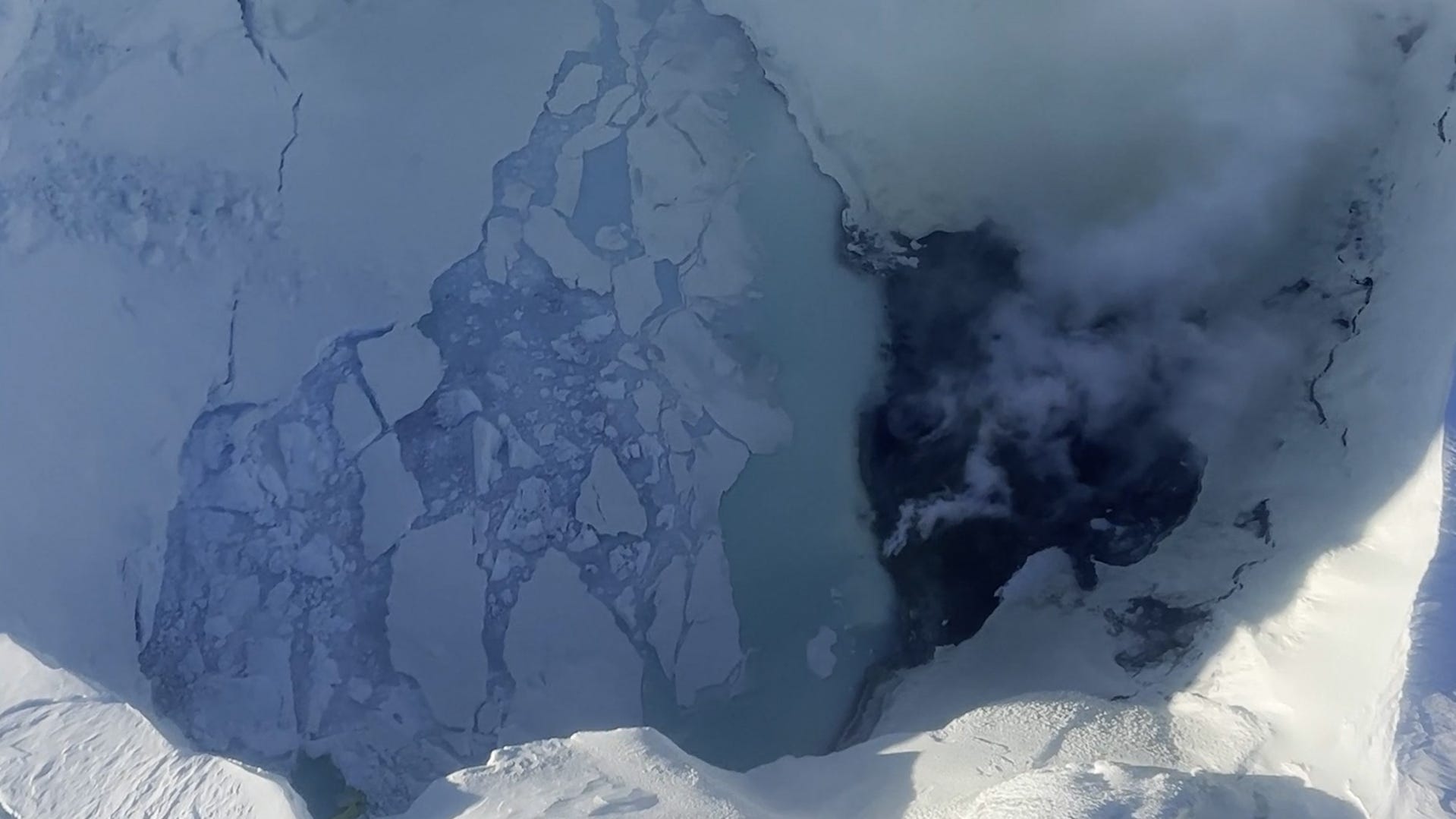What is Mount Spurr? What to know about the Alaska volcano that could erupt soon

Increasing volcanic activity at the over 11,000-foot-tall, snowcapped volcano in Alaska is likely a sign of its impending first eruption since 1992, experts say.
Mount Spurr, located about 75 miles West of Anchorage, has been acting up in recent weeks, prompting officials at the U.S. Geological Survey and Alaska Volcano Observatory to issue a yellow alert. This yellow status means the volcano is exhibiting signs of "elevated unrest" compared to its usual activity, indicating that it may soon erupt.
This, paired with other tell-tale signs like localized earthquakes and gas emissions, means an eruption is probable in the coming weeks and months.
“We cannot assign an exact timeframe for when an eruption will occur, if it does, but the increased gas emissions recorded on March 7 suggest that an eruption may occur in the next few weeks to months,” the USGS said in a news release Wednesday.
Past eruptions of Spurr have caused significant disruption to air travel in nearby Anchorage, sometimes shutting flights down for days. Here's what to know about Mount Spurr and why scientists believe it may soon erupt.
What is Mount Spurr and where is it located?
Mount Spurr is one of a string of volcanos on the Aleutian Arc, an arc of islands with more than 80 named volcanos stretching the Southwest tip of Alaska to the Kamchatka Peninsula of the Russian Federation.
According to Britannica, Mount Spurr is one of the volcanoes that makes up the Ring of Fire, created by the Pacific plate sinking below the North American plate.
It stands 11,070 feet tall and is located about 75 miles northwest of Anchorage, Alaska's largest city.
When was the last time Mount Spurr erupted?
Mount Spurr has two vents, or openings, in the Earth's crust from which lava, volcanic gas and other byproducts of volcanic activity escape.
The vent at the highest point on Spurr, called the summit vent, hasn't erupted in more than 5,000 years, according to the USGS. However, its Crater Peak vent, located about 3 miles below the summit, has erupted fairly frequently in recent history.
Mount Spurr erupted from Crater Peak on July 9, 1953, for about an hour, sending a plume of ash 30,000 feet into the air, Paste BN previously reported. The eruption shut down the Anchorage airport for two days.
A more recent eruption occurred in August of 1992, bringing the mountain's water to a boiling point and sending a plume of ash 47,500 into the air. This time, the Anchorage airport closed for 20 hours, Paste BN reported.
And, from 2004 to 2006, the mountain experienced "ice cauldron hydrothermal events" or, put more simply, a volcanic eruption that happens under a glacier creating a depression or "cauldron" on the ice's surface.
Why do scientists think Mount Spurr may erupt again soon?
The Alaska Volcano Observatory and USGS have reported “significantly elevated” volcanic activity from Mount Spurr in recent weeks. Experts have recorded increased gas emissions and newly reactive gas fissures (or fumaroles) at Crater Peek, as well as increased earthquake activity and ground deformation.
The USGS said in a notice on Wednesday that the increase in gas confirms that new magma has entered into the Earth's crust beneath the volcano. This indicates that an eruption is likely within the next few weeks or months.
"The most likely outcome of the current unrest is an explosive eruption (or eruptions) like those that occurred in 1953 and 1992," the statement said. "Those eruptions each lasted a few hours and produced ash clouds that were carried downwind for hundreds of miles and minor ashfall (up to about ¼ inch) on southcentral Alaska communities."
The agency expects to see a continued increase in seismic activity, gas emission and surface heating in the coming days and weeks leading up to the probable eruption. They will monitor the increase in activity to properly advise and warn the public in advance of the eruption.
This story was updated to add new information and correct an error.
Contributing: Marc Ramirez, Elizabeth Weise, Paste BN